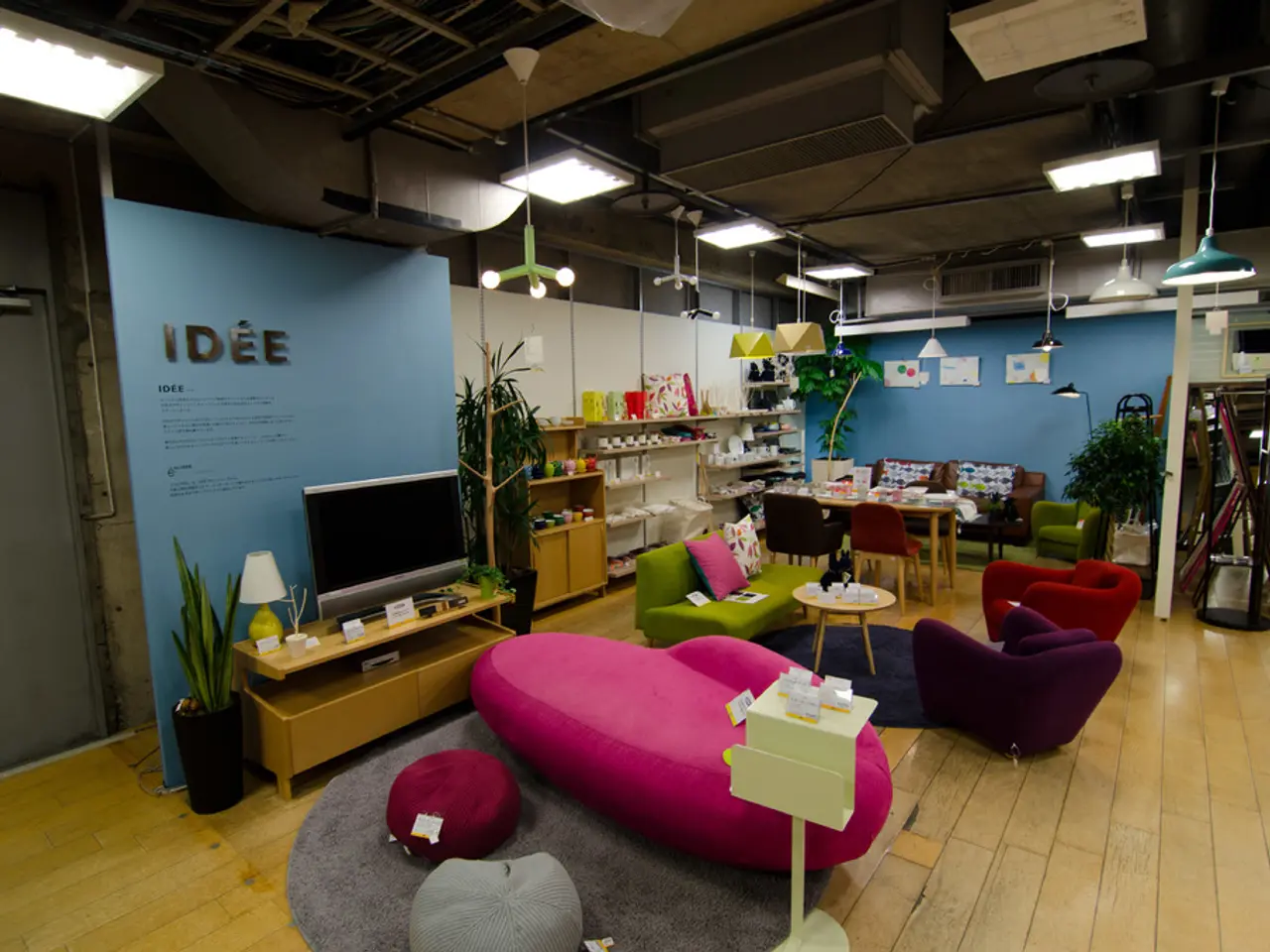"Mastering Scale in Interior Design: A Brief Guide That Will Revolutionize Your Decorating Approach"
Creating a visually appealing and harmonious interior space requires a keen understanding of scale. By following these principles and best practices, you can successfully incorporate scale into your design.
Principles of Scale in Interior Design
- Scale and Proportion: Proportion is crucial in interior design. The size of an object relative to other objects, the room itself, and the human body ensures harmony and visual appeal.
- Visual Balance: Achieving balance in a space involves distributing visual weight evenly. This can be done by using larger objects to anchor a space and smaller objects to add detail.
- Hierarchy and Context: Scale creates a hierarchy among objects, guiding the viewer's eye through the space. Larger items draw attention, while smaller ones provide interest without overwhelming the space.
- Room Size and Ceiling Height: Consider the room's size and ceiling height when choosing furniture. Larger spaces can accommodate larger furniture without feeling cluttered, while smaller rooms benefit from more compact pieces.
Best Practices
1. Furniture Selection - Choose furniture that is proportional to the room. Avoid oversized furniture in small rooms as it can feel oppressive. - Leave space around furniture to maintain a sense of openness.
2. Patterns and Textures - Mix large and small patterns to create visual interest. - Combine different textures to add depth to a space.
3. Decorative Objects - Use odd numbers to arrange decorative objects for visual harmony. - Use statement pieces as focal points to draw attention without overwhelming the space.
4. Color Proportions - Use a dominant color and accent colors to create balance. - Ensure sufficient contrast between colors to maintain visual interest without overwhelming the space.
Additional Tips
- Experiment and edit different arrangements to ensure the space feels balanced and harmonious.
- Design spaces that are inviting and comfortable for human interaction, taking into account the scale of furniture and objects relative to the human form.
By applying these principles and practices, you can create a cohesive and visually appealing interior space that incorporates effective use of scale. Layering patterns of different scales creates depth and visual intrigue, but it's vital to understand how to pattern clash or pattern drench to ensure the space looks balanced, rather than busy and overwhelming. Large furniture pieces can serve as anchors, but they should not dominate the space to the point of making it feel heavy or cramped.
Considering scale in interior design is crucial for creating aesthetically pleasing and comfortable spaces. A design without a consideration of scale is unlikely to be successful. Smaller patterns provide intricate detail that enriches the design without overwhelming it in more intimate settings. Decorative accessories should complement the scale of the furniture and the overall room proportions to achieve a polished, intentional look. Varying the sizes of accessories creates visual interest, and it's important to pay attention to balance in interior design, ensuring that larger pieces are given enough space to stand out without overwhelming the area.
The size of a couch needs to be assessed considering the size of the living room and how it will sit within the space and impact movement and flow. The 60-30-10 rule is a key approach for a balanced aesthetic in an interior's color palette, with bold patterns potentially dominating the 30 per cent proportion. Large-scale patterns can make a dramatic statement, commanding attention and adding energy to a space, but they work best in rooms with ample space to let them breathe. Good contrast between scales in a design can make a space feel more expensive.
- Achieving a harmonious living room design involves carefully selecting furniture that is proportionate to the room's size.
- To create visual interest, mix large and small patterns in decor, such as a larger art piece with smaller decorative objects.
- To ensure balance, use statement pieces as focal points, and arrange decorative objects in odd numbers for visual harmony.
- By understanding and applying the principles of scale, an interior designer can create a cohesive and visually appealing home and garden lifestyle, differing patterns to create depth and visual intrigue.
- Principle of interior design also involves understanding the impact of scale on furniture, such as ensuring a couch's size is appropriate for the living room, allowing for ample movement and flow.




